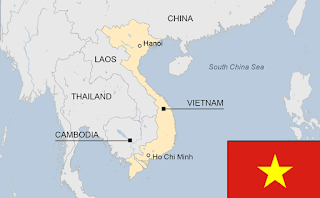[Vietnam Watch #01] Why Vietnam is Becoming Asia’s New Factory – and What It Means for the World
Explore how Vietnam is transforming into Asia’s manufacturing powerhouse—with smart investments, global partnerships, and a future-focused approach.
Vietnam’s Rise: From Agriculture to Industry
Twenty years ago, Vietnam was a farming nation. Today, it stands at the center of global supply chains. The change began with simple factories for textiles and footwear—but quickly evolved. By the late 2010s, electronics giants saw Vietnam as a viable home for high-tech manufacturing. Now, the country builds smartphones, digital TVs, semiconductors, and even smart car parts.
What’s Driving the Shift?
There are three key forces behind Vietnam’s rise:
- Cost efficiency: Competitive labor costs that attract global brands.
- Policy support: Over a dozen free-trade agreements offer tariff advantages and investor protections.
- China+1 manufacturing: Companies are diversifying beyond China, reducing risk and boosting resilience.
Major Players in the Game
Samsung has invested more than $17 billion in its Vietnamese operations, now producing over half of its global smartphone output. Apple suppliers—Foxconn, Pegatron, Wistron—also expanded there. These investments highlight Vietnam’s role not just in low-cost manufacturing, but in quality and large-scale production.
The Demographic Edge
Vietnam is home to 100 million people, with a median age of just 32. Young, digitally savvy, and increasingly English fluent, the workforce is ready for more than assembly-line work. Ho Chi Minh City and Hanoi are bustling tech hubs, attracting regional investments in fintech, e-commerce, and green energy startups.

Source: PopulationPyramid.net
Challenges & Smart Responses
Success doesn’t come without challenges. Vietnam faces infrastructure strain, rising energy demands, and educational needs. In response, the government is investing in highways, smart ports, and university–company partnerships, especially in engineering and vocational training.
Korea–Vietnam: A Strategic Partnership
South Korea has become one of Vietnam’s most vital economic partners. Over 10,000 Korean firms, including LG, SK, and Lotte, operate in Vietnam. Beyond investments, Korean pop culture, education exchanges, and tourism foster deeper cultural integration—making the relationship economically productive and socially rich.
Green Manufacturing on the Rise
Vietnam also aims for sustainability. Solar and wind farms are expanding, and “green zones” are being built to reduce factory emissions. As global brands demand eco-friendly practices, Vietnam is positioning itself as a green manufacturing destination—producing electric scooters, eco-certified electronics, and even testing zero-emission industrial areas.
What It Means Globally
Vietnam’s growth shifts the global manufacturing landscape. It offers a resilient alternative to China and serves as a blueprint for other emerging economies. For global businesses, Vietnam presents a combination of scale, stability, and strategic access to markets. For policymakers, it highlights how well-coordinated trade policies, infrastructure, and workforce investment can reshape economic prospects.
Frequently Asked Questions
Q: Why is Vietnam attracting so much FDI?
A: Because it offers competitive labor costs, trade access, and a stable environment—plus growing infrastructure and workforce skills.
Q: Is Vietnam ready to replace China?
A: Not replace, but complement. It provides an alternative production hub, especially for electronics and footwear, reducing reliance on a single country.
Q: Will automation affect jobs?
A: Likely yes. Vietnam is slowly adopting robotics and AI in factories. Its advantage lies in cost, regulation, and domestic innovation, not just manual labor.
Q: Can Vietnam sustain growth?
A: The government’s green and digital investments—like renewable energy and infrastructure modernization—aim to support long-term, sustainable growth.
Q: How does this affect global supply chains?
A: It diversifies them. Sourcing from Vietnam reduces geopolitical and pandemic-related risks tied to China-heavy dependencies.
Conclusion
Vietnam’s rise as Asia’s “new factory” reflects more than cost-efficiency—it’s a story of strategy, talent, and forward-thinking. From manufacturing smartphones to building green zones, the country is reinventing its economy and identity. As global trends shift, Vietnam is not only responding—it’s leading.





Comments
Post a Comment